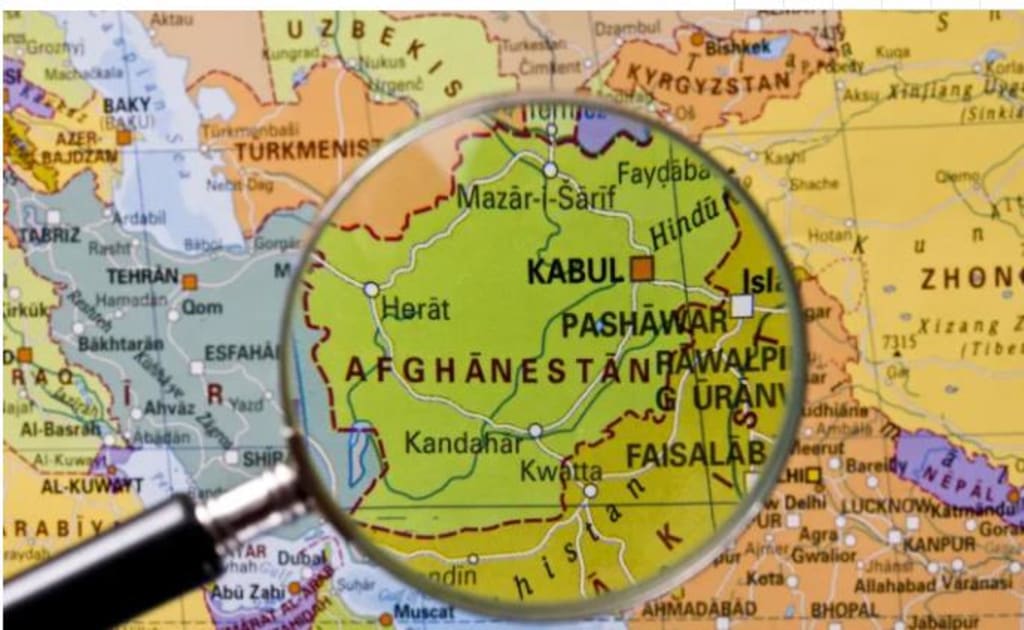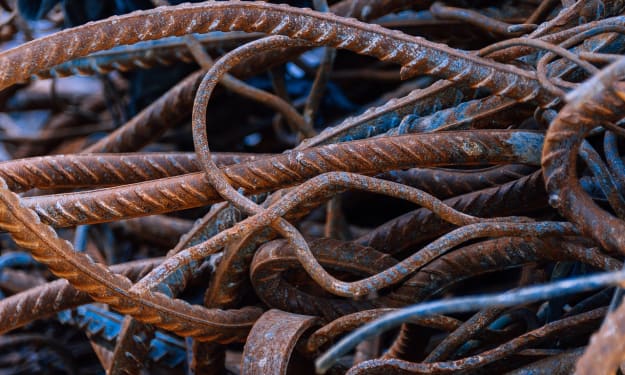Inventory of Asia's resource-rich but mixed with the "poor" 6 countries, have you been?
And see the article data analysis

I. Afghanistan (GDP per capita: $525)
Total economy: $19.99 billion
Area and population: total area of 652,300 square kilometers; population: 29.92 million (2005)
Country details: Afghanistan is located at the crossroads of West Asia, South Asia, and Central Asia, bordered by Turkmenistan, Uzbekistan, and Tajikistan in the north, a narrow strip of land protruding from the northeast bordering China, bordering Pakistan in the east and southeast, and bordering Iran in the west. Three-fifths of Afghanistan's territory is inaccessible. It has a continental climate with dryness and little rain throughout the year. Afghanistan is historically known as the "lock and key" to the South Asian continent, and its strategic position is very important.
Important resources: Afghanistan's mineral resources are very rich but largely unexplored. It is estimated that Afghanistan's energy and mineral resources are worth more than $3 trillion. Afghanistan has the world's third-largest copper belt, the richest lithium ore, and the fifth largest iron ore. Afghanistan is the world's leading and most famous source of lapis lazuli, which is known as the "national stone" of Afghanistan.
More than 1400 deposits have been found in Afghanistan, including iron, iron complex, copper, lead, zinc, nickel, lithium, beryllium, gold, silver, platinum, palladium, talc, marble, barite, precious and semi-precious stones, salt, coal, uranium, oil and natural gas. The famous mineral deposits in Afghanistan include Hajigak iron ore, Aynak copper ore, Bamiyan coal mine, Herat lithium ore, Amdaria oil and gas field, Afghanistan-Tajik basin oil and gas field, etc. Natural gas reserves are about 150 billion cubic meters, coal reserves are about 100 million tons. Salt reserves are 300 million tons, lapis lazuli reserves are 1300 tons, iron ore reserves are 1.7 billion tons, and copper ore reserves are 500 million tons.
Second, Tajikistan (GDP per capita: $826)
Total economic volume: $7.7 billion
Area and population: 143,100 square kilometers; 9.1 million people.
Country Details: Located between Afghanistan, Uzbekistan, Kyrgyzstan, and China, Tajikistan is the only country among the five Central Asian countries whose main ethnic group is not of Turkic origin.
Kyrgyzstan's economy is relatively weak and homogeneous, and the political and economic crisis that followed the collapse of the Soviet Union in 1991 and years of civil war caused severe damage to the national economy, with economic losses totaling more than $7 billion. It is worth mentioning that Tajikistan's economy has gradually recovered since 1997, and a new currency has been issued since the beginning of the 21st century to stabilize and improve the country's financial system.
Important resources: Tajikistan has mainly non-ferrous metals (lead, zinc, tungsten, antimony, mercury, etc.), rare metals, coal, rock salt, and also: oil, natural gas, rich uranium ore, and many kinds of construction materials. It is worth mentioning that Kyrgyzstan ranks first in the CIS in terms of uranium reserves, especially lead and zinc ores, which are the first in Central Asia; followed by lead, zinc, molybdenum, tungsten, antimony, strontium, gold ore, oil, natural gas, coal, rock salt, fluorite, etc. Tajikistan is rich in hydraulic resources, which once ranked eighth in the world and the first in the world in terms of per capita possession, accounting for about half of the whole of Central Asia, but the amount of development is less than 10%.
Tajikistan has lignite, rock coal, c, oke, and anthracite, etc., with a total of 4.6 billion tons of proven reserves. The quality and reserves of coke are the highest in Central Asia, with a taste of up to 80%, a burning value higher than 9,100 calories, and low sulfur content of coal. Tajikistan ranked second in the world in terms of quality grade of anthracite coal. In addition, Kyrgyzstan's plantation industry accounts for 70% of the total agricultural output, and cotton plantation is important in agriculture, especially famous for the production of high-quality fine fiber cotton, and cotton production per unit area is the first among the former Soviet republics. 40% of the arable area is used for cotton cultivation.
Yemen (GDP per capita: $997)
Total economy: $29.08 billion
Area and population: 527,970 square kilometers; population is 23.6 million (2013)
Country details: The Republic of Yemen is located at the southwestern tip of the Arabian Peninsula, bordered by Saudi Arabia and Oman, the Red Sea, the Gulf of Aden, and the Arabian Sea. it was formed in May 1990 by the merger of the Yemen Arab Republic (North Yemen) and the People's Democratic Republic of Yemen (South Yemen). Yemen has a written history of more than 3,000 years and was once one of the cradles of ancient civilizations in the Arab world.
Located at the southern tip of the Arabian Peninsula, Yemen borders Saudi Arabia in the north, the Arabian Sea and the Gulf of Aden in the south, Oman in the east, and Ethiopia, Somalia, and Djibouti on the African continent across the Straits of Mande in the west. Yemen has a coastline of about 2,000 kilometers, with very convenient sea transportation. The Strait of Mandeb in the southwest is one of the important international navigable straits, communicating with the Indian Ocean and the Mediterranean Sea, and is the main sea transportation route between Europe, Asia, and Africa, and its strategic location is extremely important. Aden, located in the Gulf of Aden in the Arabian Sea, is one of the most famous ports in history.
Yemen is also one of the least developed countries in the world economically, especially because food can not be self-sufficient, about 1/2 rely on imports. The desert is becoming increasingly desertified due to overgrazing, especially in the summer, when sandstorms are common in the desert. Yemen's cotton is of good quality and is exported in large quantities every year, and coffee is grown in a large area, which is very important.
Important Resources: Yemen is a typical resource-based country, with oil and gas in particular being its most important natural resources. Since the 1980s, Yemen's industrial production and export of oil have been the backbone of its national economy.
Yemen is also relatively rich in non-oil resources, and the main metal mines are gold, silver, lead, and zinc. According to the survey of Yemen Geological and Mineral Survey, a large number of gold deposits were found in more than 30 places in Hajjah, Hadramaw, Saada, Jawf, Abiyang, and other governorates and Sana'a area. Among them, gold ore in the Alharka area of Hajjah province can reach 39 million tons with 65 grams of gold per ton of ore; about 678,000 tons of gold ore in the Made valley of Hadramaw province with about 15 grams of gold per ton; gold ore found in the western plain contains 12-32 grams of gold per ton; and 3-5 grams in Sana'a area. According to experts, Yemen's gold mines are mainly located in areas rich in volcanic rocks from the Precambrian era. Water resources in Yemen are scarce and mainly rely on groundwater.
It is worth mentioning that the technique of making Yemeni waist knives, an important representative of Yemeni handicrafts, can be traced back to thousands of years ago and has become a symbol of ancient Yemeni culture. Yemeni coffee has always been a traditional export of Yemen and is still one of the most important cash crops and exports of the country. Yemeni coffee originated from the Arabica coffee tree hundreds of years ago and is produced at altitudes above 3,000 feet, with the unique cultivation and production methods of Yemeni coffee remaining virtually unchanged.
Most of the famous Yemeni coffee is exported to countries all over the world through this place, and it is predicted that Yemeni coffee will gradually take the name of Mocha, which has always been considered the best coffee in the world, and its excellent quality has always been praised by the world, and Mocha coffee was first exported to Europe, and then gradually became popular in neighboring countries. In modern times, almost all the coffee exported from the Arab region and even India is named mocha Yemen is the real origin of the world-famous mocha coffee.
Fourth, Nepal (GDP per capita: 1011 U.S. dollars)
Total economy: $28.92 billion
Area and population: 147,181 square kilometers; population 2.88 million.
Country Details: The Federal Democratic Republic of Nepal, or Nepal for short, is a mountainous landlocked country in South Asia, the birthplace of Buddhism, one of the world's three major religions, located in the southern foothills of the Himalayas, bordering the Tibet Autonomous Region of China to the north, the Republic of India's Sikkim state to the east, and the Republic of India's West Bengal, Bihar, Uttar Pradesh, and Uttarakhand states to the west and south.
Nepalese settled along the Kathmandu Valley in the 6th century B.C. Subsequent immigration from India and the invasion of Britain have co-opted the history of Nepal.
Nepal is an agricultural country with 80% of its population engaged in agriculture and was once one of the least developed countries in the world. Nepal is a nearly rectangular country, measuring 885 kilometers from east to west and between 145-241 kilometers from south to north.
Important Resources: Nepal has discovered metallic deposits of iron, copper, zinc, lead, nickel, cobalt, molybdenum, gold, tungsten, titanium, and silver; non-metallic deposits of rhodolite, limestone, dolomite, marble, garnet, mica, graphite, quartz, clay, phosphate, granite, silica, and gemstones; and energy minerals such as oil, natural gas, uranium, geothermal, and coal. Among them, iron ore reserves are about 23.05 million tons, copper ore reserves are about 16.18 million tons, lead ore reserves are about 3 million tons, zinc ore reserves are about 2.66 million tons, magnesite reserves are about 200 million tons, limestone reserves are 985 million tons, and mica reserves are 320,000 tons.
There are more than 6,500 kinds of plants and 1,000 kinds of wild animals and birds in Nepal. The main wild plants are bifid civet algae, Christopher civet algae, erect civet algae, multi-stemmed civet algae, branching civet algae, Kumon civet algae, climbing civet algae, long-distance civet algae, round-leaved civet algae, star-shaped civet algae, yellow-flowered civet algae, cordyceps, red silk ginger flower, Indian rock flower, Banna butterfly orchid, Cyathea, asparagus, mountain cranberry tree, etc.
Wildlife mainly includes: short-nosed fruit bats, big-hoofed bats, cuckoos, magpie robins, silver-eared phalarope, red-billed phalarope, Asian elephants, common macaque, sand fox, Tibetan fox, Bengal fox, Indian bison, small spirit cat, big spirit cat, leopard cat, fishing cat, civet, zebra frog, giraffe saw stag beetle, black orbital toad, Bengal giant lizard, crab-eating mongoose, thin-billed vulture, colorful pheasant, etc.

V. Myanmar (GDP per capita: $1,215)
Total economy: US$65.67 billion
Area and population: Myanmar covers an area of about 678,500 square kilometers; population: 53.7 million.
Country Details: Myanmar is one of the member countries of the Association of Southeast Asian Nations. It is bordered by the Andaman Sea to the southwest, India, and Bangladesh to the northwest, China to the northeast, and Thailand and Laos to the southeast. The capital city is Nay Pyi Taw.
Burma is an ancient civilization with a long history. 1044 years after the formation of a unified country, it has undergone three feudal dynasties: Bagan, Eastwood, and Kampong. 1824 to 1885, the British launched three wars against Burma and occupied Burma. 1886, the British made Burma a province of British India. On 4 January 1948, Burma declared independence from the British Commonwealth and established the Union of Burma. In 2005, the Burmese government moved the capital from Yangon, the largest city, to Nay Pyi Taw (formerly known as Bin Mana). Myanmar is a predominantly agricultural country, with over 60% of the population engaged in agriculture, and agricultural products such as rice, wheat, and sugar cane
Important resources: Myanmar is rich in mineral resources, with: oil, natural gas, tungsten, tin, lead, silver, nickel, antimony, gold, iron, chromium, jade, etc.
Petroleum is one of the most important economic resources in Myanmar. Petroleum used to be the largest mining industry in Myanmar, with a maximum annual production of about 1 million tons. After 1960, oil was discovered in Ayado, Myanmar, Pyi Maw, Shwe Pyi Tha, Man, and Lepanto.
Myanmar is a world-renowned producer of precious stones and jade. The main source of gemstones is the Magdalene Valley, which produces rubies and sapphires in abundance. 95% of the world's jadeite and jade tree are produced in Myanmar, which is well known in the world.
Myanmar is rich in forest resources, with 34.12 million hectares of forest land, covering about 50% of the country, and is the country with the largest teak production in the world. Teak is tough and resistant to corrosion and was the best shipbuilding material in the world before mankind used steel to build ships. Myanmar regards teak as a fruit tree and is called the "King of Trees" and the "Treasure of Myanmar".
Sixth, Pakistan (GDP per capita: $1284)
Total economy: $278.02 billion
Area and population: Pakistan's national territory is 880,254 square kilometers (including the Pakistani-controlled Kashmir); the population is 212 million.
Country Details: The Islamic Republic of Pakistan, abbreviated as Pakistan, means "land of holiness" and "land of the halal". 95% of the population follows Islam and is a multi-ethnic Islamic country. The national language is Urdu.
Pakistan is located in the northwest of the South Asian subcontinent, bordered by the Arabian Sea to the south, India to the east, China to the northeast, Afghanistan to the northwest, and Iran to the west. The coastline is 980 kilometers long. The southern part has a tropical climate and the rest is subtropical. Islamabad, the capital, and Karachi, the former capital, are the largest cities.
Pakistan was originally part of British India and became an autonomous province of the British Commonwealth on August 14, 1947, when British partitioned India and Pakistan. Pakistan is a developing country with a rapidly growing economy and is a member of the World Trade Organization, the Organization of the Islamic Conference, the Group of 77, the Non-Aligned Movement, and the Commonwealth.
Important Resources: Pakistan is rich in coal resources. According to the Geological Survey of Pakistan (GSP), Pakistan's coal resources are estimated at around 185 billion tons, of which 184 billion tons are in Sindh province, accounting for 99.5% of the country's total. Pakistan's major mineral reserves include 492 billion cubic meters of natural gas, 184 million barrels of oil, 185 billion tons of coal, 430 million tons of iron, 74 million tons of bauxite, and large quantities of chromite, marble, and precious stones. The forest coverage is 4.8%.
The Khawla salt mine in Pakistan's Punjab province is the largest and oldest salt mine in Pakistan, and also the second largest salt mine in the world, with 99% purity of rock salt.
Due to its subtropical location, Pakistan is rich in fruit resources, and it is known as the "fruit basket" of the East.
It is worth mentioning that Pakistan ranks first in the world in soccer production, and it is the soccer manufacturing industry that has made Sialkot one of the most important industrial cities in Pakistan, making it a place frequented by the world's sporting goods manufacturers. According to reports, the factories in Sialkot produce about 40 million soccer balls per year, and 70% of the world's annual soccer ball production comes from here, while the annual production of soccer balls here can reach 60 million when the European Cup or the World Cup and other major events are coming.
About the Creator
Bobbi Ruivodt
When you've worked for something, you'll love it
Enjoyed the story? Support the Creator.
Subscribe for free to receive all their stories in your feed. You could also pledge your support or give them a one-off tip, letting them know you appreciate their work.






Comments
There are no comments for this story
Be the first to respond and start the conversation.